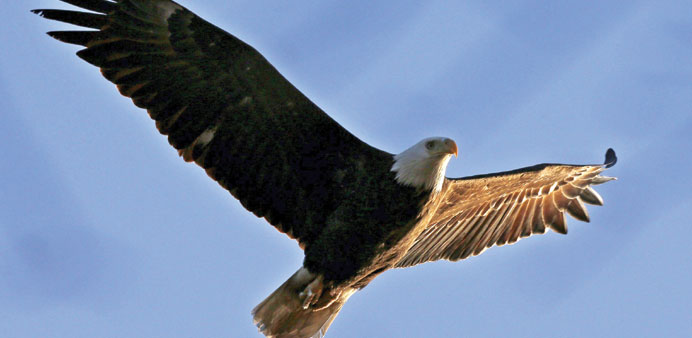Reuters/New York
A pair of bald eagles is nesting in New York City for the first time in more than 210 years, wildlife experts said on Friday, an event that highlights a national comeback by the majestic raptors after bans on pesticides and hunting.
A nest in a treetop on the south shore of Staten Island, the most suburban of the city’s five boroughs, is the first since around 1800, said Tod Winston, spokesman for the New York City Audubon conservation group.
“This year, we had eagles spotted in all five boroughs of New York City,” Winston said. “This is the first pair actually to be confirmed to be incubating eggs on a nest here in New York City.”
The expectant parents, named Vito and Linda by the birding community, appear to be incubating at least one egg, with the female spending most of her time on the massive nest while the male hunts for food before they swap duties.
“They are trading time off the nest,” Winston said. “He’s a modern bird, Vito.”
The eggs, estimated to be about two weeks old, take 35 days to incubate, meaning the urban fledgling will likely make its debut in May. Its first attempt at flight will likely take place in August, Winston said.
The bald eagle, the national bird of the US, was declared an endangered species in 1978. Its numbers have increased, largely as the result of environmental protections, particularly a federal ban of the pesticide DDT.
New York state, which had no breeding bald eagles left by the 1960s, last year had 254 nesting pairs, Winston said.
The 7-ft-wide by 2-ft-high (2-m-wide by 0.6-m-high) nest is located on land owned by the state Department of Environmental Conservation, within sight of a suburban neighbourhood. The birds had built a practice nest in the same location last year, Winston said.
Seth Wollney, a bird-loving college student who has been watching the eagles regularly, said their behaviour this year confirmed that they were taking up residency to welcome at least one eaglet.
“One bird flew into the nest and there was already a bird sitting there. They did a little bill touching. When they swapped places, the bird stood on the side of the nest, ruffled its breast and belly feathers and very gingerly came to rest on the nest,” Wollney said. “It confirms nesting.”



